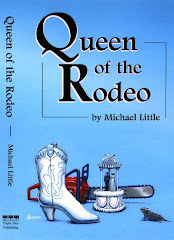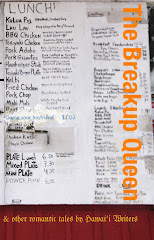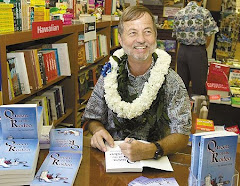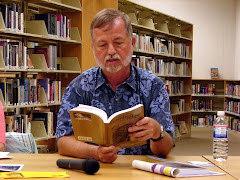This is not about the legal and moral issues attached to blondes who break and enter. Nor is it even about blondes in general. This is not the time and place to talk about one particular blonde who proposed to me in the frozen food section of a supermarket in Seattle (I said no, of course; a guy wants a little more romance at times like that).
What this is about, in fact, is one particular blonde’s unfailing instinct for rejecting inferior choices and pouncing on just the right option. It’s what made her famous, that and the fact that she walked uninvited into the home of three bears who didn’t know her from Madonna. Like Madonna, of course, she is known by one name.
Ask any child and you’ll hear the kid’s account of Goldilocks. Ask astronomers and they’ll tell you about the “Goldilocks zone,” where the temperature of a distant planet is just right for water to be liquid at its surface and thus able to support life as we know it. Ask me and I’ll tell you about what writers can learn from this famous blonde.
Writers always seem to be struggling to find their own Goldilocks zone, to know when their work is just right. Goldilocks knew, she knew, which bowl of porridge was too hot, which was too cold, and which was just right. The story doesn’t tell us how she knew, but I think it was not something she had to analyze before she chose the baby bear’s bowl of porridge and ate it all up. Her taste buds told her. She knew what she liked. Going in, she had some experience with porridge.
Then the business with the chairs. The daddy chair? Too hard. The mama chair? Too soft. It was only after sampling these two that Goldilocks chose the baby chair and declared it to be “just right.” Same sequence as with the porridge. She had to taste from all three bowls and sit on all three chairs before knowing how to proceed. Unfortunately, Goldilocks must have spent half her life in the buffet line, because the baby bear’s chair broke beneath her.
Undeterred, our daring heroine went upstairs to see what other damage she could inflict. As we well remember, Goldilocks had to try out all three beds before deciding that the baby bear’s bed was just right. It was so right that she soon fell asleep and was there when the three bears returned from their picnic and found the blonde invader sacked out. Much shouting and merriment ensued, leading to a frightening lesson for children who can’t resist porridge in strange homes. We are told that blondes no longer wander into bear homes in the Black Forest, although they do find other ways to wreak havoc. They have been spotted (blondes, not bears) as far away as supermarkets in Seattle.
All right, so Goldilocks was not a great burglar, but she does point the way for writers who want to know when it’s just right. How long should my story be? You can read Aristotle’s thoughts on this in his Poetics. I was taught in college that a work should have magnitude, “that quality of a work of art whereby it has as many parts as is consistent with a single view of parts and whole.” How many parts? How many pages? Not too many, and not too few, but just right.
One way to discover how long is “just right” is to write too few pages, then write too many. The right length lies somewhere in between. To test the value of a part, take it out. If Shakespeare removes the character Ophelia from Hamlet, is the tragedy diminished? If he gives Ophelia a part twice as large, is the tragedy improved? Shakespeare knew the answers to these questions.
We know as well the answers for our own stories. That knowledge arrives, however, only after we fiddle with the parts: adding, removing, shuffling, and finally arriving at the right length. It is difficult to question the length of the Goldilocks story. Bears leaving the house for a picnic (no need for their back story); cheeky little blonde walking in and helping herself to the food and furniture (we don’t require her criminal history, just get on with the story); the bears returning home and discovering the naughty blonde. Beginning, middle, and end.
Three bears? Perfect. Does baby bear need a big brother or sister? Maybe in real life, but not in our story. Two bowls of porridge? Something missing there. Four chairs? Too many by one. And is the bed part not perfectly placed for a dramatic climax? You bet.
Recently I was reminded of the reality of the late arriving answer. We ask questions of our stories, lumber through a first draft, shake our heads and begin a second draft, and so on until at last we find the answers and our story is just right, or as right as we can make it. Consider the case of Daniel Quinn. In 1992 Quinn published Ishmael, a remarkable little novel in which the title character, a half ton silverback gorilla, teaches the narrator about ecology, life, freedom, and the human condition.
Quinn’s first version of the award-winning novel was written 15 years earlier, in 1977, and was followed by seven more complete and distinct versions as the writer struggled with the book. The eighth, and final, version was the late arriving answer to Quinn’s question. In this published version the gorilla character, Ishmael, appears for the first time. Quinn also made another major change in this final version: he decided to write the book as a novel. And so it was, in another inspirational story for writers, that publication came as Quinn was about to admit defeat.
Perhaps there were other, long lost versions of the Goldilocks story. Goldilocks and the Three Frogs? Redlocks and the Seven Bears? Goldilocks, the Three Pigs, and the Building Inspector? We accept the classics as chiseled in stone, but we should remember the early uncertain steps in the creative process.
The faces of the four Presidents at Mount Rushmore we take for granted today, but in the early plans the faces would have been those of Lewis and Clark, or Washington alone. Four’s a good number on Rushmore. It’s just right. Consider too that the sculpture is unfinished. Borglum’s original design called for a sculpture of the Presidents to their waists, but time and money only provided for their heads. Give me just the heads every time. At Rushmore less is more. This is a lesson for writers to keep in mind. If we write four drafts of a novel, maybe that third draft is the answer.
Woody Allen wrote a comic story about the invention of the sandwich by the Earl of Sandwich, in which the earl does extensive research into cold cuts and cheeses, but fails miserably again and again with his early experiments. Then, one glorious day, the earl decides to put the meat inside two slices of bread, thus making deli history.
For some reason (and we might as well just accept it, as we accept gravity), you can’t invent the sandwich on day one. You can’t write Ishmael in one draft. And that notorious blonde with burglary in her heart? I like to believe she started out to visit her grandmother. She missed the wolf, but she did find other instructive wildlife to keep us all entertained for lo these many years.
Friday, July 18, 2008
Subscribe to:
Post Comments (Atom)















No comments:
Post a Comment